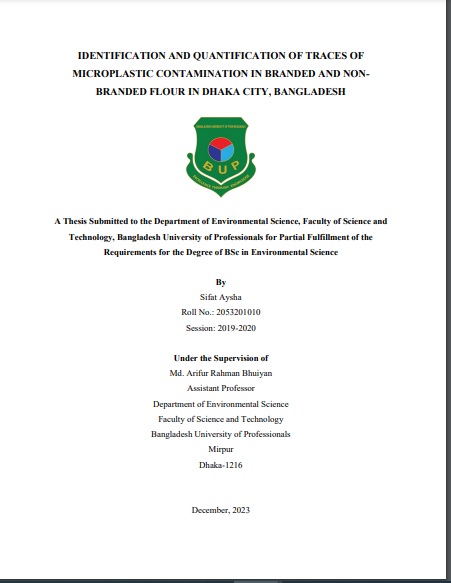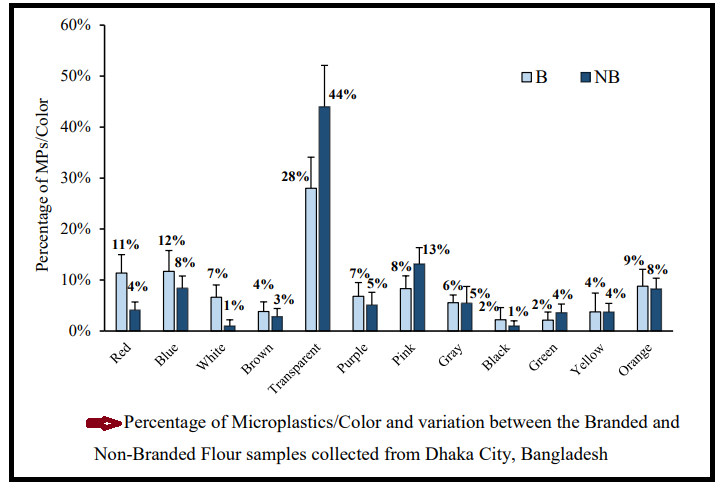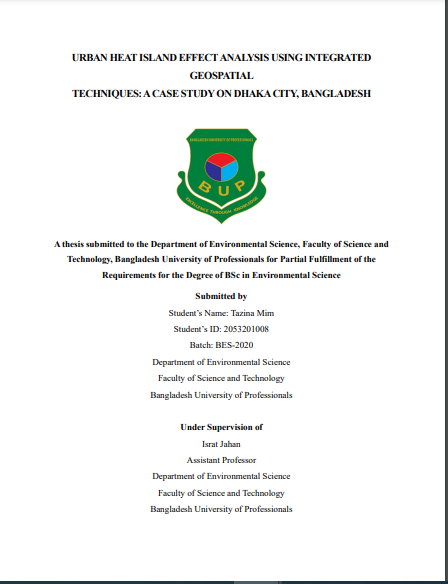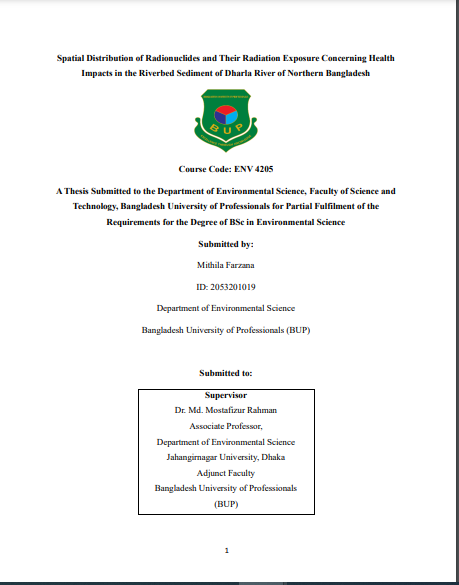
Micro-plastic Contamination in Branded & Non-Branded Flour in Dhaka. In recent years, the ubiquity or Micro-plastic (MPs) contamination in global food supply has been escalating with the increasing use of plastics in all sectors. This issue has emerged as a critical concern and is now receiving significant scrutiny by the researchers.
From this perspective, this study has investigated the abundance and characteristics of micro-plastics in branded and non-branded flour in Dhaka City, Bangladesh.
Background of the Study
Plastics are a widely used material due to its versatility, high durability, lightweight and cost-effectiveness. Because plastic materials are low in density, have low thermal and electric conductivity, and are resistant to corrosion, they can act as an oxygen and water barrier and are very flexible.
Depending on their intended purpose, plastic products can have a shelf life of anywhere from one to more than fifty years before being disposed of as plastic garbage. This meant that 71% of the recycled energy was lost to the environment, 9% was collected by 12%, and 8% was dumped on land.
The two types of micro-plastics differ significantly in how they infiltrate the environment. While secondary micro-plastics are created by the weathering and wear of larger plastics into smaller particles directly in the environment, primary micro-plastics are released into the environment in their final form.
| Report Title : | Micro-plastic Contamination in Branded & Non-Branded Flour in Dhaka. |
| University Name : | Bangladesh University of Professionals |
| Submitted To : | Md. Arifur Rahman Bhuiyan |
| Submitted By : | Sifat Aysha |
| Total Page : | 89 |
Primary micro-plastics include minuscule particles produced for commercial use, including those found in cosmetics, and 2 microfibers shed from garments and other materials, like fishing nets. Primary and secondary micro-plastics might differ in terms of size, shape, and color. Secondary micro-plastics are the byproducts of weathering and erosion and typically have an erratic shape.
However, different plastic products like polybags, plastic trays, pallets, containers, crates, carriers are used during the production, processing, storage and transportation of flour. This makes flour susceptible to micro-plastic contamination.

Outline of the Report
- Chapter One: Introduction, Background of the Study, Problem Statement, Rationale of the Study, Research Gap, Research Hypothesis, Research Question, Research Objective, Limitations of the Study, Definitions of Terms Used in Thesis, Outline of the Thesis,
- Chapter Two: Literature Review, Micro-plastics and its Sources, Micro-plastics in Food, Micro-plastic Exposure to Human Health.
- Chapter Three: Materials and Methods, Conceptual Framework, Data Sources, Research Design, Instruments, Required Materials and Machineries in Sample Preparation, Required Chemical Reagents for Sample Preparation, Required Machineries and Software in Sample Analysis, Software Used in this Study, Overview of the Sampling Method, Sample Collection Area, Sample Collection Procedure, Sampling Procedure, Sample Preparation and Isolation of Micro-plastics, Density Separation and Initial Filtration, Digestion and Final Filtration, Sample Analysis, Visual Observation of MPs using Stereo Microscope, Chemical Analysis of MPs using FT-IR Spectroscopy, Quality and Contamination Control, Probable Estimation of Microplastic Health Risk, Statistical Analysis.
- Chapter Four: Results and Discussion, Results and Discussion, Abundance and Distribution of MPs in Flour Samples, Morph type, Size and Color Composition of MPs in Flour Samples, Morph type Composition, Size Composition, Color Composition, Comparative Analysis of Micro-plastic Contamination between Branded and Non-Branded Flour Samples, Comparison of MPs Abundance, Percent Comparison of MPs Morph type, Percent Comparison of MPs Size, Percent Comparison of MPs Color, Chemical Group Identification of MPs using FTIR Spectroscopy, Probable Health Impact Estimation of Micro-plastic Contamination.
- Chapter Five: Conclusions and Recommendations, Conclusions and Recommendations.
Problem Statement
The extensive use of plastics in daily life and the mismanagement of plastic waste have made micro-plastic contamination a growing phenomenon. It is now a global concern due to its significant impact on the ecosystem, food safety and human health. Micro-plastics are now present in terrestrial, aquatic and even atmospheric environments making their way up the food chain.
Plastics enter the environment, accumulate in water, soil making its way to the bodies of floras and faunas and accumulate. Thus, they are entering the human bodies as well. On the other hand, plastics are widely used in packaging, which helps in storage, transportation, protection, and preservation of food while reducing food waste in the industry.
Research Objective
Broad Objective
The broad objective of the study is the identification, quantification, classification and characterization of micro-plastic particles present in the branded and non-branded flour in Dhaka city, Bangladesh.
Specific Objectives
- To determine the abundance of micro-plastics in flour in Dhaka city, Bangladesh
- To assess the physical and chemical characteristics of the micro-plastic components
- To compare between the micro-plastic contamination of branded and non-branded flour and determine probable health impacts
Research Question
- Is flour (both brand and non-brand) in Dhaka City, Bangladesh contaminated with micro-plastics? If yes, then what are their characteristics and quantity?
- Is there any significant difference between branded flour and non-branded flour in the case of micro-plastic contamination?
Conclusion
All the branded and non-branded flour have been identified to contain micro-plastics in a significant amount. Among all six flour samples, sample Among the branded samples, sample B2 has been found to have the highest abundance of micro-plastic particle/kg. Flour being a major source of carbohydrate in Bangladesh the micro-plastic contamination in flour has raised an alarming situation. The source of micro-plastic contamination requires proper investigation and identification to prevent the contamination from its root.







